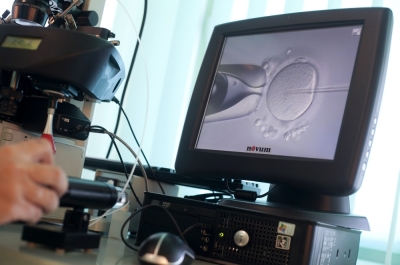The complicated legal rights of embryos as infertility grows

What rights should an embryo have? It’s been a heavily debated topic for decades now. Historically, the question revolved around whether or not unborn babies should have legal protection from abortion.
Over the years fertility treatments have advanced, resulting in up to 1,000,000 embryos frozen in time. Today, the conversation becomes ever more complicated. Some people with a pro-life perspective believe that any fertilized zygote is a human life, deserving the chance at a full and healthy life. If you have this world view, the ever-growing bank of frozen embryos is likely concerning.
However, pro-life perspectives are actually diverse on this issue. For example, you may be pro-life, but believe that embryos should only be protected once they implant in the womb. Or, perhaps you don’t identify as pro-life. Even still, the legal issues concerning embryos are complicated and merit a thoughtful conversation.
Accidental destruction of embryos
In 2018, devastating news rocked the fertility industry. Over 4,000 frozen embryos and eggs were destroyed when a freezer failed due to human error at University Hospitals Fertility Center in Cleveland. Shockingly, that same weekend, another 1,000 embryos and eggs were lost in San Francisco in an unrelated incident at Pacific Fertility Center.
First, the families impacted by this loss felt immense grief. Then, the topic shifted to who was liable for this devastating oversight? Unfortunately, American law is woefully under-equipped to bring justice to families when their fertility clinics are negligent. Part of the issue is that fertility technology advances so quickly that laws are unable to keep up for establishing regulation. Additionally, plaintiffs cannot pursue “wrongful death” claims because embryos are not currently recognized as “persons.” For now, when precious embryos are destroyed, there are very few options for legal recourse.
What happens to embryos when their parents divorce?
Although embryos may be trapped in time when frozen, the lives of the couples who conceived these embryos move forward—and sometimes they move towards divorce. What happens to embryos when one parent deeply desires to have the baby, while the other parent no longer consents?
In America, doctors focus most on increasing a couple’s odds of having a baby, so they maximize the number of embryos made during in vitro fertilization (IVF) treatment, often resulting in a surplus of embryos. However, the more frozen embryos that are created, the more liabilities are created. Conversely, other countries have more regulation, reducing liabilities in the case of divorce. For example:
- United Kingdom 10-year storage limit
- Germany only 3 embryos can be made at a time
- Brazil 3-year storage limit
When a couple embarks on IVF, they disclose their preferred plan should they divorce. However, if the initial agreement comes into contention, the legal precedent historically deferred towards the parent who wants the embryos destroyed. A landmark case in Arizona may mark a change. In 2014, when Ruby Torres was diagnosed with breast cancer, she and her husband went through IVF before she began her cancer treatment, which often destroys a woman’s fertility. When they divorced in 2016, Torres’ ex-husband delivered a devastating blow; he wasn’t comfortable with her birthing their biological child(ren). Although the courts seem to be honoring the couple’s original contract to donate the embryos if they divorce, Torres has been appealing the case.
She may not have legal recourse to give birth to these embryos, but the case has prompted new laws in Arizona regarding frozen embryo rights in future cases. Republican lawmakers passed a law favoring the rights of the woman who desires to carry the embryos to term. Additionally, the law stipulates that the person who doesn’t want the embryos will be free from “parental responsibilities” and cannot be called upon to pay child support.
This law is about more than just frozen embryos and divorce. The law proves controversial on the abortion debate because it’s the first case to lean towards the birth of frozen embryos when there’s a debate among the biological parents. It may have legal applications to limit women’s access to abortion and pro-life groups see this as a win.
Embryo adoption
Embryo adoption is emerging as a new frontier in the world of adoption. Adoptive mothers can carry and birth an embryo that’s not biologically their own, giving life to the embryos that are filling up fertility clinic freezers.
Embryo adoption (aka “snowflake adoption”) comes with its own legal concerns. The law treats the transfer of embryos as a property exchange, quite differently than it treats traditional adoptions. If the biological parents have more than one embryo that they’re seeking to find an adoptive family for, they’ll likely transfer the sibling set to one adoptive mother. The mother will implant the embryo(s) in her womb and may opt to attempt to birth all of the embryos she received. However, if she reaches a point where she feels her family is complete, ownership of the remaining embryos returns to the biological parents.
Like traditional adoption, the biological parent(s) and the adoptive parent(s) draft up an agreement about how “open” they want their adoption to be. Additionally, once an embryo is born into the family of an adoptive parent, the biological parents don’t have any parental rights over the child. Various private agencies have their own eligibility rules, for example, they may prohibit adoptions after the adoptive mother reaches a certain age.
Forming a family through adoption or fertility treatment can be expensive. Embryo adoption is a combination of both, yet its prices are often cheaper than most other adoption routes. Fertility treatment may range from $250 (for sperm donation) up to $150,000 (for a surrogate to carry the baby). Adoption may range from $1,500 (for foster-to-adopt) up to $50,000 (for international adoption). The average cost to adopt an embryo is $14,500.
Although we’re incredibly inspired by the ways medicine has helped families facing fertility challenges, the more embryos that are created, the more complicated the conversation becomes. We anticipate ongoing dialogue about the legal issues for years to come.
LightWorkers’ mission is to create engaging, uplifting and inspirational content that breaks through the clutter, building a community of sharing and igniting a movement in the real world that motivates people to celebrate and share the good all around them.




























